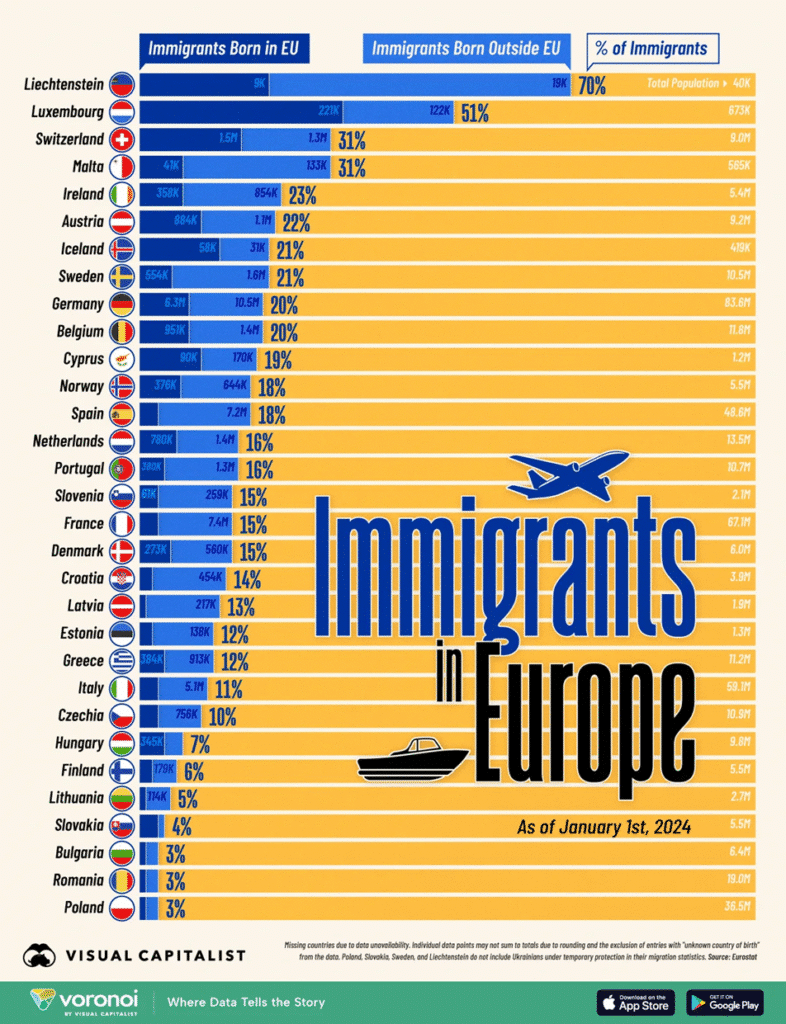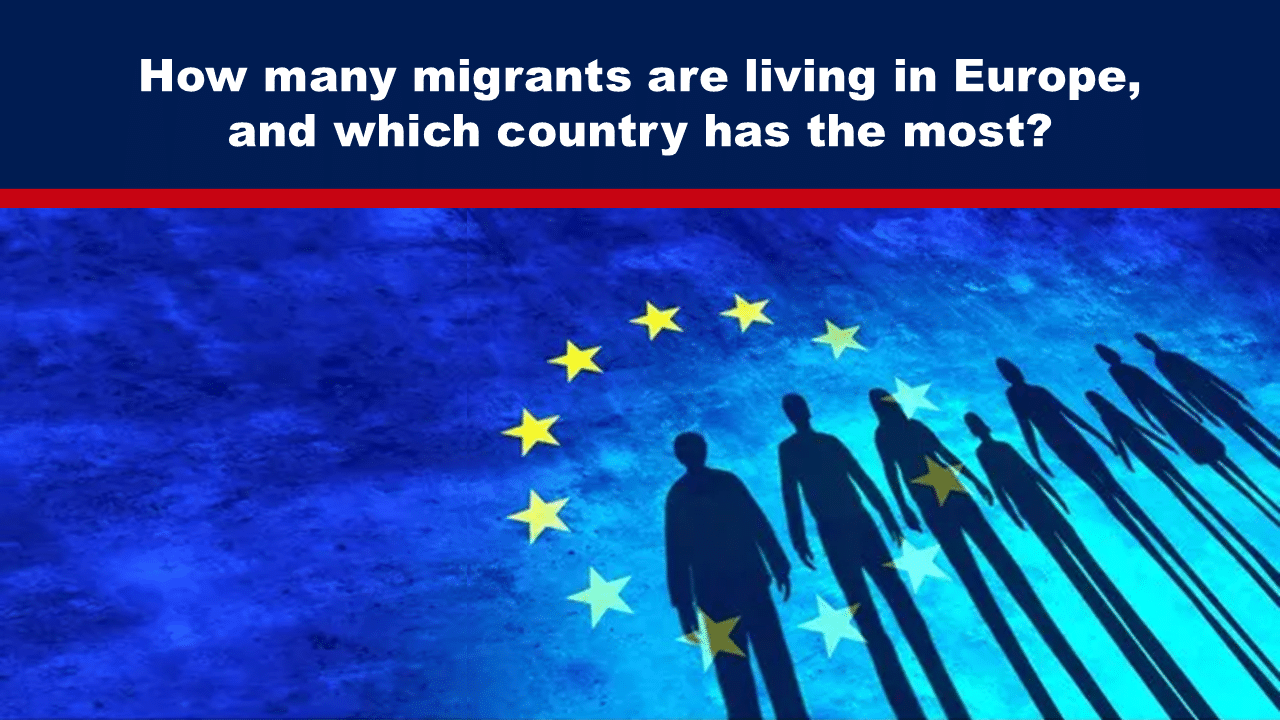How many migrants are living in Europe, and which country has the most?
Visual Capitalist recently produced a graphic of available migrant data according to country of birth as of 1 January 2024.
Liechtenstein tops the list of European countries with the most immigrants. 70% of its 40,000 residents were born abroad, and roughly two-thirds hail from outside the EU.
Meanwhile, Germany tops the list with the most immigrants by absolute numbers alone. 16.9 million people, equal to one-fifth of Germany’s population, were born abroad, of which one in eight are EU-born.
The following is adapted from an article originally published by Visual Capitalist on 28 September 2025.
The infographic below visualises the ranks of 31 European countries by the share of immigrants, and lists their absolute numbers for further context.
Data for this visualisation comes from Eurostat, which tracks resident populations by country of birth as of 1 January 2024.

In a table, which we haven’t included here, Visual Capitalist lists the European Countries with the most immigrants. Liechtenstein’s 70% foreign-born share stands out, but Luxembourg (51%) and Malta (31%) also depend heavily on immigrants, Visual Capitalist says and continues: Their small domestic workforces, favourable tax regimes, and cross-border job markets create strong pull factors. In all three, non-EU migrants make up a majority, underscoring their roles as global – not just European – talent hubs.
Related: Liechtenstein is not an EU member, along with Iceland, Norway and Switzerland, but they are all part of the Schengen Agreement and the Eurozone.
Germany Has the Most Immigrants in Europe
With 16.9 million immigrants, Germany alone accounts for one-quarter of all foreign-born residents in the EU.
Its ageing population and robust manufacturing base drive consistent demand for labour.
Yet only 37% of these arrivals come from within the EU, suggesting that Germany’s pull extends well beyond the continent, and reflects broader geopolitical magnetism, including Middle-Eastern and Asian inflows.
Related: Germany’s median age is 47; it’s the 9th oldest country in the world by this metric.
Europe’s East-West Migration Patterns
Western and Northern Europe average immigrant shares above 15%, while many Eastern states linger below 5%.
Poland (3%) and Romania (3%) sit at the bottom.
This is a reflection of the East-West migration path
While economic convergence has narrowed wage gaps between the two sides of Europe, western job markets and higher living standards still attract Eastern Europeans, leaving a noticeable demographic imbalance across the EU.
Related: Many Eastern European countries have fewer residents now than in 1990.
What Kind of Immigrants are Included in the Data?
Most EU member states rely on administrative data to report to the EU, such as registers for population, foreigners, residence, work permits, health insurance or tax.
Thus, this data will not include immigrants who entered illegally or who reside in a way not captured by a government agency.
Furthermore, every country except for these four listed – Poland, Slovakia, Sweden, and Liechtenstein – include Ukrainians under temporary residence or refugee permits in their migration statistics.
Immigrants have to reside in the country for more than 12 months to be counted.
Related: Where is the UK? Since Brexit, Eurostat has stopped collecting and publishing relevant UK data. Per the last census (2020-21), about 16% of the UK is foreign-born.

